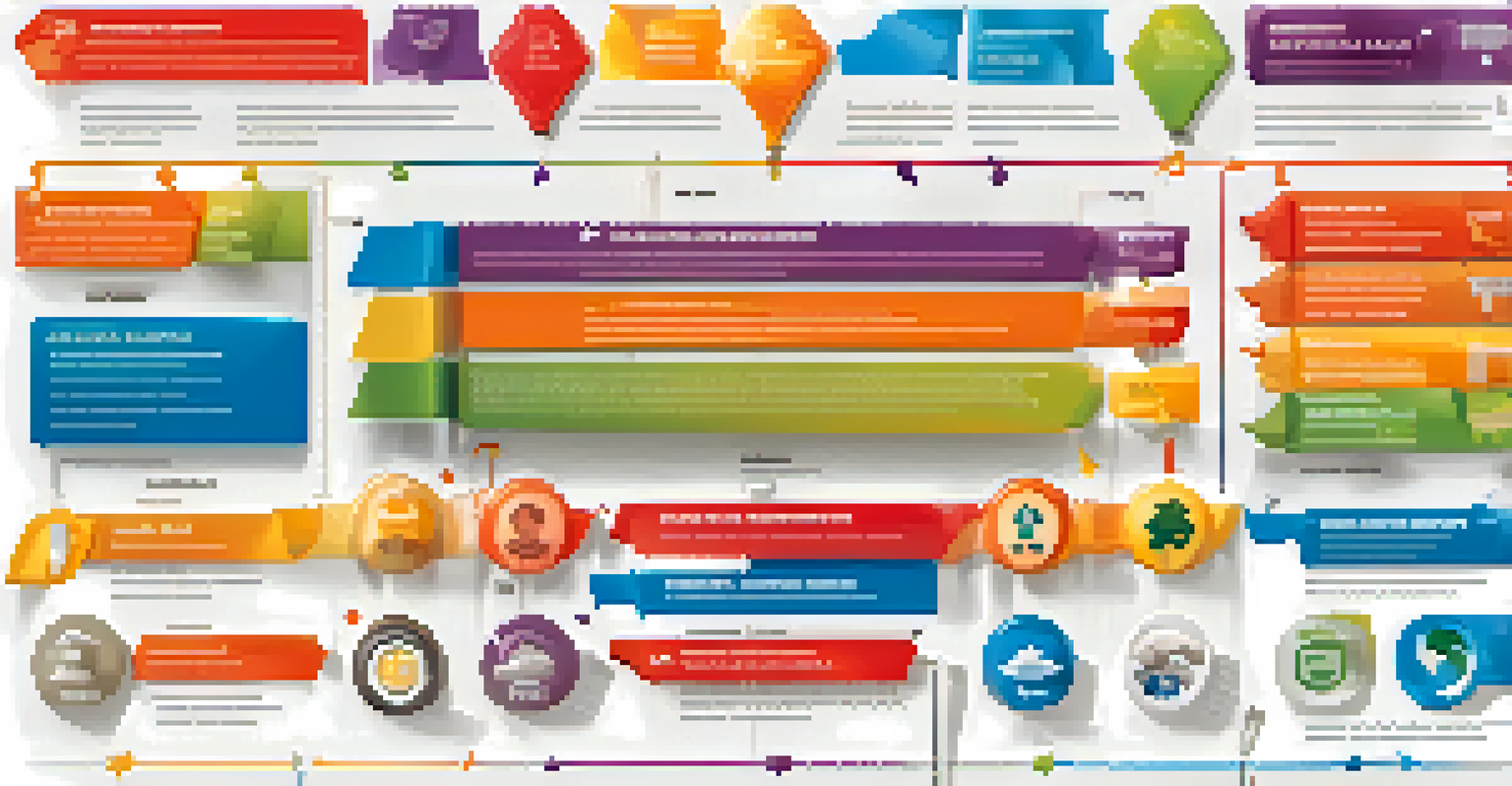Employee Benefits: Legal Requirements and Best Practices

An Overview of Employee Benefits and Their Importance
Employee benefits encompass a range of perks, including health insurance, retirement plans, and paid time off. These offerings are essential not just for attracting top talent but also for retaining employees who feel valued. By providing a comprehensive benefits package, companies can foster a positive workplace culture that boosts morale and productivity.
Employees who believe that management is concerned about them as a whole person will be more productive, more satisfied, and more fulfilled.
In today’s competitive job market, employees often weigh benefits alongside salary when considering job offers. A robust benefits package can differentiate an employer from others, making it crucial for businesses to understand the value of these offerings. This investment in employees often translates into higher job satisfaction and lower turnover rates.
Furthermore, benefits are not just a luxury; they are a vital part of employees' financial and emotional well-being. For instance, health insurance can alleviate financial stress, while flexible working arrangements can improve work-life balance. As such, understanding the legal requirements and best practices surrounding employee benefits is essential for any employer.
Legal Requirements for Employee Benefits in the Workplace
Employers must comply with various laws governing employee benefits, which can vary by state and country. Key federal laws in the U.S., such as the Employee Retirement Income Security Act (ERISA), set minimum standards for pension plans and health benefits. Understanding these regulations is crucial to avoid legal pitfalls that could lead to hefty fines.

Additionally, the Affordable Care Act (ACA) mandates that larger employers provide health insurance to their full-time employees or face penalties. This requirement highlights the importance of staying informed about changing legislation to ensure compliance. Regularly reviewing your benefits offerings in light of legal requirements can safeguard your organization.
Employee Benefits Boost Retention
A comprehensive benefits package is essential for attracting top talent and retaining employees who feel valued.
Moreover, some states have specific laws regarding paid sick leave and family leave, which employers must adhere to. Failing to comply with these regulations not only risks financial penalties but can also damage your company's reputation. Therefore, staying updated on local and federal laws is key to maintaining a legally compliant benefits package.
Essential Employee Benefits: What Employers Should Offer
While legal requirements provide a baseline, best practices suggest offering a more comprehensive range of benefits. Health insurance, retirement plans, and paid time off are essential, but consider adding options like wellness programs, childcare support, or student loan assistance. These benefits can significantly enhance employee satisfaction.
To win the marketplace, you must first win the workplace.
Flexible working arrangements, such as remote work or flexible hours, have become increasingly important to many employees. Offering these options not only demonstrates trust but also helps to accommodate diverse lifestyles and responsibilities. Employers who are willing to adapt often see improved employee engagement and productivity.
Moreover, providing opportunities for professional development, such as training and education reimbursement, can be a significant draw for potential employees. By investing in your employees' growth, you not only enhance their skills but also cultivate loyalty. A well-rounded benefits package that goes beyond the basics can make your company a more attractive place to work.
Best Practices for Communicating Employee Benefits
Clear communication about employee benefits is crucial for ensuring that employees understand what they are entitled to. Regularly scheduled meetings or workshops can help clarify benefits and address any questions. Comprehensive benefits handbooks or online portals can also serve as valuable resources for employees.
Employers should not only communicate the 'what' but also the 'why' behind their benefits offerings. Sharing stories of how specific benefits have positively impacted employees can create a more relatable narrative. This approach not only educates but also builds a sense of community within the workplace.
Legal Compliance is Crucial
Employers must stay informed about various laws governing employee benefits to avoid legal pitfalls and maintain a good reputation.
Additionally, soliciting feedback from employees about their benefits can provide insights into what is working and what needs improvement. Surveys or informal check-ins can reveal employee preferences and help tailor benefits offerings to meet their needs better. Engaging employees in this way fosters a culture of open communication and support.
Navigating Employee Benefits During Changing Circumstances
The landscape of employee benefits can shift dramatically due to economic changes, public health crises, or even evolving employee expectations. For example, the COVID-19 pandemic prompted many organizations to reassess their benefits packages, focusing more on mental health support and flexible work arrangements. Adapting to these changes is vital for staying competitive.
Employers should regularly review and adjust their benefits offerings to ensure they align with the current needs of their workforce. This could mean introducing new benefits, such as telehealth services or mental health days, that reflect the changing priorities of employees. Being proactive instead of reactive can position a company as a leader in employee care.
Furthermore, keeping an open dialogue with employees about their needs during these times can help inform beneficial changes. By listening and adapting, employers can foster a supportive environment that encourages loyalty and productivity, even during uncertain times.
The Role of Technology in Managing Employee Benefits
Technology plays a significant role in the management and delivery of employee benefits. Online platforms can streamline the enrollment process, making it easier for employees to understand and choose their benefits. This convenience can enhance employee engagement and satisfaction with their benefits package.
Moreover, utilizing HR software can help employers track compliance, manage costs, and analyze usage data. By leveraging technology, companies can gain insights into which benefits are most valued by employees, allowing for informed decision-making. This data-driven approach can ensure that the benefits package remains relevant and appealing.
Technology Streamlines Benefits Management
Utilizing technology enhances the management of employee benefits, making it easier for employees to understand and engage with their options.
Additionally, technology can facilitate better communication, offering employees easy access to benefits information through mobile apps or dedicated portals. This level of accessibility ensures that employees feel empowered to take full advantage of their benefits. Embracing technology not only simplifies management but also enhances the overall employee experience.
Evaluating and Adjusting Employee Benefits Over Time
Regular evaluation of employee benefits is essential to ensure they remain effective and relevant. This process can involve gathering employee feedback, reviewing industry trends, and analyzing the impact of benefits on employee retention and satisfaction. By assessing these elements, employers can make data-driven decisions about potential adjustments.
Employers should also consider benchmarking their benefits against competitors to identify areas for improvement. Understanding what other organizations offer can provide insights into potential changes that could enhance your own benefits package. This competitive analysis can be crucial for attracting and retaining top talent.

Finally, creating a culture of continuous improvement around employee benefits can foster loyalty and engagement. By regularly revisiting and refining your benefits offerings, you demonstrate a commitment to employee well-being. This ongoing process not only enhances the employee experience but also contributes to a thriving workplace culture.